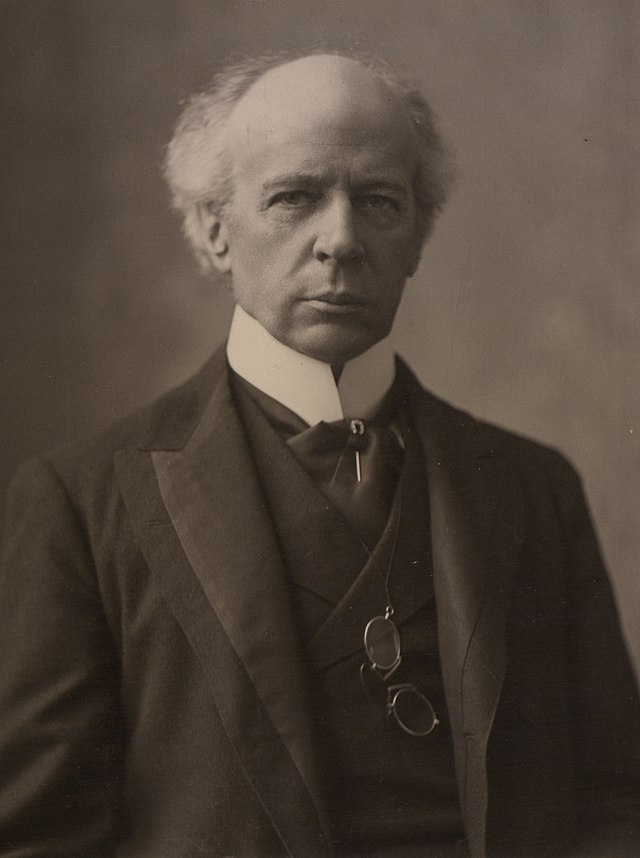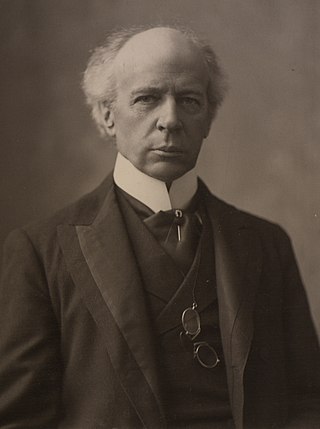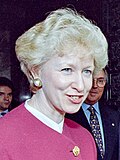Top Qs
Timeline
Chat
Perspective
List of prime ministers of Canada by time in office
From Wikipedia, the free encyclopedia
Remove ads
The prime minister of Canada is the head of government of Canada. Since Canadian Confederation in 1867, there have been 24 prime ministers who have formed 30 Canadian ministries. The first prime minister, Sir John A. Macdonald, took office on July 1, 1867. The position does not have a set term of office and does not have term limits. Instead, prime ministers can stay in office as long as their government has the confidence of a majority in the House of Commons of Canada under the system of responsible government.[1] Under this system, William Lyon Mackenzie King was Canada's longest-serving prime minister, holding office for a total of 21 years and 154 days over three non-consecutive terms.[2]
Canada's three longest-serving prime ministers, left to right:
William Lyon Mackenzie King; 21 years, 154 days
Sir John A. Macdonald; 18 years, 359 days
Pierre Trudeau; 15 years, 164 days
All served non-consecutive terms.
William Lyon Mackenzie King; 21 years, 154 days
Sir John A. Macdonald; 18 years, 359 days
Pierre Trudeau; 15 years, 164 days
All served non-consecutive terms.
Canada's three shortest-serving prime ministers, left to right:
Sir Charles Tupper; 68 days
John Turner; 79 days
Kim Campbell; 132 days
Sir Charles Tupper; 68 days
John Turner; 79 days
Kim Campbell; 132 days

The prime minister's term begins upon appointment by the governor general of Canada, usually after winning a general election. One prime minister can also succeed another with no election—usually, but not necessarily, when they are successive leaders of the same party. A prime minister stays in office until they resign, die or are dismissed by the governor general.[3] Two prime ministers have died in office (Macdonald[4] and Sir John Thompson[5]). All others have resigned, either after losing an election, a parliamentary no confidence vote, or upon retirement. Theoretically, the monarch or governor general can dismiss a prime minister, but that has never happened.
The prime ministerial term is not tied directly to the term of the House of Commons, which the Constitution sets as a maximum of five years from the most recent general election.[6][7] A prime minister takes office after winning an election and resigns after losing an election, but the term in office does not match up directly to the term of the Parliament. An incoming prime minister will normally take office a few weeks after the election, and an outgoing prime minister will usually stay in office for a few weeks after losing the election. The transition period and the date for the transfer of office are negotiated by the incoming and the outgoing prime ministers.
A prime minister who holds office in consecutive parliaments is not re-appointed as prime minister for each parliament, but rather serves one continuous term.[3] When a prime minister holds office in more than one parliament, it is customarily referred to as the prime minister's first government, second government, and so on.[8]
A majority government normally lasts around four years, since general elections for Parliament are normally held every four years. Minority governments generally last for a shorter period. The shortest minority government, Arthur Meighen's second government, lasted just under three months.[2] A prime minister who is selected by the governing party to replace an outgoing prime minister may also serve a short term, if the new prime minister is defeated at the general election. Charles Tupper served the shortest term in Canadian history, only sixty-eight days, in this way.[2] He was selected by the Conservative Party to replace Mackenzie Bowell just before the general election of 1896, which Tupper and the Conservatives lost.[9] John Turner and Kim Campbell both served short terms for similar reasons.[10][11]
Of the other prime ministers who served short terms, Arthur Meighen, Joe Clark, and Paul Martin had their time in office cut short by the collapse of their minority governments and the subsequent election of the opposition party.[12][13][14] Two prime ministers have served without ever sitting in the House of Commons during their time in office: Tupper[a] and Turner.[b] Campbell was sworn in as prime minister on June 25, 1993. She did not face parliament as prime minister prior to it being dissolved on September 8, 1993 for the 1993 Canadian federal election.
In the late nineteenth century, three prime ministers succeeded to the office and did not call an election: John Abbott, who resigned resigned for health reasons,[19] and Thompson, who died in office.[20] Bowell resigned after a Cabinet revolt.[21]
On seven occasions from the twentieth century, a prime minister has retired and the governing party has selected a new party leader, who automatically became prime minister. Meighen (1920), Louis St. Laurent (1948), Pierre Trudeau (1968),[22] Turner (1984), Campbell (1993), Martin (2003) and Mark Carney (2025) all succeeded to the office in this way. The new prime minister may continue to govern in the parliament called by the previous prime minister, but normally calls an election within a few months. Meighen was the exception, governing for over a year before calling an election. In those cases, the time before and after the election is counted as one government for the purposes of this table.
When a general election is called, the prime minister stays in office during the campaign. If the prime minister's party wins the election, the prime minister remains in office without being sworn in again; the prime minister's tenure of office is continuous. If defeated in the election, the outgoing prime minister stays in office during the transition period, until the new prime minister takes office. All of that time is included in the total "Time in office". The first day of a prime minister's term is counted in the total, but the last day is not.[23]
For the first half century of Confederation, there were gaps between the term of an outgoing prime minister and the incoming prime minister. The shortest gap, two days, was between Macdonald and Alexander Mackenzie in 1873: Macdonald resigned office on November 5, 1873, and Mackenzie was appointed on November 7.[2] The longest gap, ten days, was upon the death of Macdonald on June 6, 1891. Abbott did not take office until June 16, 1891.[2] The last time there was a gap, of four days, occurred between Laurier and Robert Borden: Laurier resigned effective October 6, 1911, and Borden took office on October 10.[2] There have been no gaps in office since that transition, with the new prime minister taking office the day after the former prime minister leaves office.[2]
Remove ads
Table of prime ministers
Summarize
Perspective
Canadian custom is to count by the individuals who were prime minister, not by terms.[24] Since Confederation, 24 prime ministers have been appointed by the governor general to form 30 Canadian Ministries.[24]
Historical conservative parties/Progressive Conservative Party of Canada (12)
Liberal Party of Canada (11)
Conservative Party of Canada (1)
Explanatory notes
- Tupper was re-elected to the House of Commons on February 4, 1896, after an absence of four years, and served as government house leader in the House of Commons under Prime Minister Mackenzie Bowell until the 7th Parliament was dissolved on April 24, 1896. He replaced Bowell as prime minister on May 1, 1896 and fought the 1896 federal election, but was defeated. He resigned as prime minister on July 8, 1896, replaced by Wilfrid Laurier. When the 8th Parliament was first summoned, he was no longer prime minister.[15][16][17]
- Turner was sworn in as prime minister on June 30, 1984, but did not have a seat in the House of Commons. The 32nd Parliament was dissolved on July 9, 1984. Turner fought the 1984 federal election, but the Liberals were defeated by the Progressive Conservatives under Brian Mulroney. Turner resigned as prime minister on September 16, 1984. He was personally elected to the House of Commons in the 1984 election, but did not take his seat until the 33rd Parliament was first summoned on November 5, 1984.[18][16][17]
Footnotes
- For the purposes of this table, when a prime minister takes office by succeeding to the party leadership, the time before and after the prime minister's first election is treated as one government.
Remove ads
Political parties by time in office
Remove ads
See also
References
Bibliography
External links
Wikiwand - on
Seamless Wikipedia browsing. On steroids.
Remove ads






























